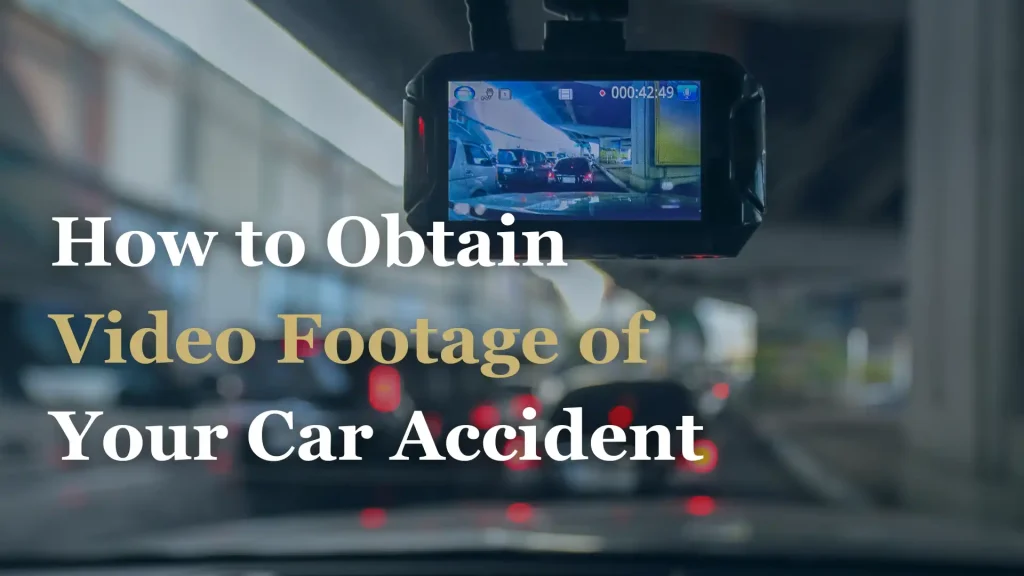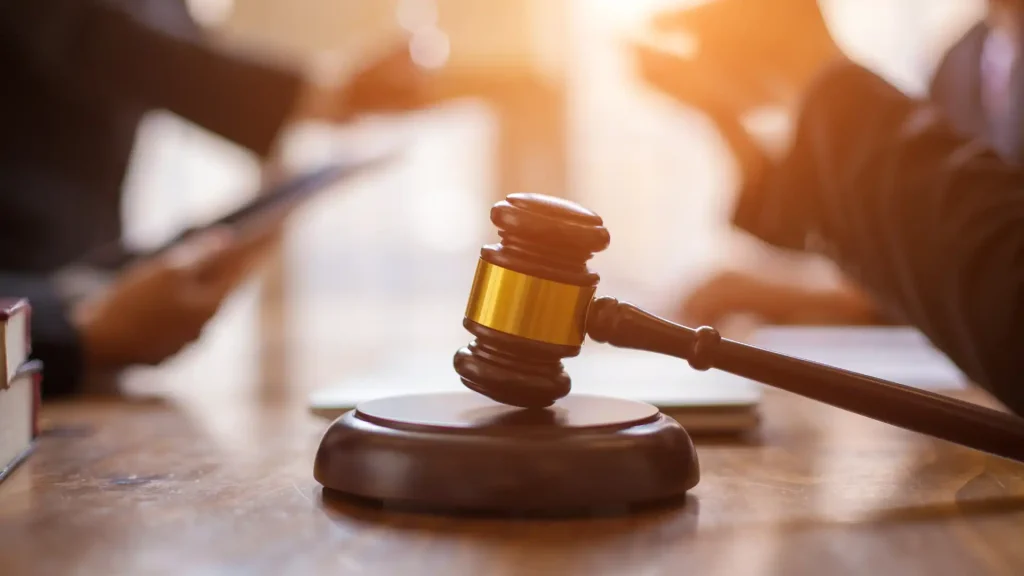
When you are injured in a car accident, you likely have a million questions. You may also feel overwhelmed, distressed, and vulnerable. We understand. Here at Turbak Law Office, P.C., our Watertown car accident lawyers have years of experience handling car accident claims for our clients, including advising on how to get traffic camera footage to support your case. With a seasoned, compassionate legal team by your side, you can pursue compensation for injuries caused by someone else’s wrongdoing.
Receiving compensation depends on proving to the insurance companies that you didn’t cause the accident.
You need to obtain video footage of the incident to prove your nonliability as strongly as possible. This may include traffic camera footage, surveillance recordings, or dash cam videos. This type of footage gives insurance adjusters a clear view of the accident. It ensures that no one can dispute the validity of your claim.
Understanding the Importance of Video Footage
If a camera recorded the accident, the footage could offer a clear, indisputable view of the incident. For example, the video could clearly show who failed to brake in time or who accelerated unnecessarily.
Cameras expose critical factors human observers might miss. They record precise speeds, capture fleeting gestures or distractions, and document road conditions with unwavering accuracy. Visual evidence strengthens your credibility immensely. When your account aligns perfectly with recorded events, it bolsters your entire case, from injury claims to emotional distress arguments.
If your accident occurred in an area covered by traffic cameras, learning how to obtain traffic camera footage can provide essential evidence. In many cases, footage can reveal key moments leading up to the crash, such as whether a red light was run or if there was a sudden change in traffic conditions.
Footage dismantles false narratives instantly. It prevents at-fault parties from fabricating alternative versions of events, forcing accountability where it belongs. When your accident description matches the facts established by the recording, you will be in a much better position to claim maximum compensation for your accident-related injuries.
DOT Traffic Cameras
The South Dakota Department of Transportation (DOT) operates a statewide network of traffic cameras. These are generally placed at busy intersections, highways, and other high-traffic, high-risk areas. Even though that’s the case, the SD DOT 511 website still shows shots of the views from their cameras. This system is for traffic congestion and weather conditions and does not record video from any of their cameras, so they won’t have evidence you can use.
Requesting Surveillance Footage After Accidents
Many businesses and residential buildings have outdoor surveillance cameras that might have recorded your accident. If you can, revisit the scene of your incident and survey the area, taking note of any businesses, homes, or other properties with visible outdoor security cameras. Business owners and homeowners may mount these devices on buildings, light poles, or parking lot structures.
Once you have identified the businesses or residences that might possess helpful footage, approach the business or property owner directly. Explain the details of your accident, your insurance claim, and how their recording will help your case. Be courteous. No one is legally obligated to share the footage if they do not want to.
If a business owner requests official documentation to support your request for the recording, contact an experienced South Dakota car accident attorney to formalize your request.
Can I Obtain Video Footage without an Attorney?
In the best-case scenario, you can learn how to get traffic camera footage of a car accident and access the footage you need without involving a South Dakota attorney. However, when dealing with corporations or footage containing sensitive information, an attorney can significantly increase the likelihood of a successful request.
Additional Tips for Obtaining Video Footage
- Be Persistent but Polite: If a business turns you down at first, you can follow up via email with additional requests and clarifications—but always maintain a respectful tone.
- Document Your Efforts: Note all your attempts to obtain footage, including dates, times, and names. If a residence or company later denies that you requested the footage, this will help prove your side of the story.
- Understand the Limitations: Not all areas have traffic or surveillance cameras, and sometimes technical issues corrupt footage. Manage your expectations and retain a flexible mindset regarding this process.
How Video Surveillance Can Enhance Your Claim
Once you have successfully obtained video footage from a security camera that recorded your accident, make sure that you submit a copy of that footage to your South Dakota lawyer. They can use it to bolster your claim with the at-fault party’s insurer. To further strengthen your case, highlight the key timestamps in the video and explain your perspective on what was happening in them.
Insurance adjusters are incentivized to dispute any of your factual claims and question your memory to justify a lower payout offer. In any discussions with the insurance adjuster, your South Dakota lawyer can refer back to this objective incident recording.
Strengthening Your Claim with Concrete Proof
Video evidence transforms your claim’s foundation, elevating it from subjective recollections to concrete visual proof. This footage captures crucial details that memory alone might miss, preserving the exact sequence of events leading to your accident.
- Analyze the video meticulously, identifying key moments supporting your events. Freeze-frame critical instants that demonstrate negligence or hazardous conditions. These snapshots serve as powerful visual aids during negotiations or in court.
- Leverage the footage to corroborate witness statements, strengthening their credibility. Match their accounts with the video timeline, reinforcing your narrative’s consistency and reliability.
- Employ the video to challenge any attempts by the opposing party to downplay the severity of the incident. Highlight visual cues that showcase the impact’s force or the dangerous circumstances surrounding the accident.
- Utilize the footage to document immediate physical reactions or visible injuries. This visual evidence counters arguments that your injuries occurred elsewhere or were pre-existing conditions.
- Integrate the video into a comprehensive timeline of events. Combine it with other evidence, such as medical records and expert testimony, to create a compelling, multi-faceted presentation of your case.
- Remember, video evidence often prompts insurance companies to reevaluate their stance. The mere existence of clear, irrefutable footage frequently accelerates settlement negotiations and increases the likelihood of a fair offer.
- Metrically safeguard the original video file. Create multiple backups and ensure its authenticity remains unquestioned. This precaution protects against potential claims of tampering or editing.
By effectively leveraging video surveillance, you transform your claim from a contestable account into a visually substantiated case, significantly enhancing your position in pursuit of fair compensation.
What If the Footage Shows I Was Partly at Fault?

The video evidence might suggest some fault on your part. However, even in such cases, you can still claim partial compensation for your damages because of a South Dakota law called comparative negligence.
In South Dakota, if your contribution to the accident was slight, you can still recover compensation for the losses you suffered due to the accident. However, any compensation you recover will be reduced in proportion to your percentage of fault for the crash.
In these situations, an experienced South Dakota car accident attorney can be extremely helpful: they can carefully analyze the footage, identify all the relevant details, and assess your percentage of fault. Then, they can use that footage to negotiate with the at-fault party’s insurer, highlighting any factors that reduce your share of blame to maximize your compensation.
How an Experienced Car Accident Attorney in South Dakota Can Help
At Turbak Law Office, P.C., we have obtained video footage of car accidents for many clients, giving them legal peace of mind from the second they call our office. Through our years of experience, we understand how overwhelming the post-accident scenario can feel and how complex the process of obtaining video footage can be.
Our firm’s compassionate and seasoned Watertown personal injury lawyers will help you identify and locate every relevant video and security camera in the area. They will contact property and business owners and submit formal requests and legal documentation for the footage. Once obtained, they will analyze the results to build the strongest case for you.
Our attorneys scrutinize every frame of acquired footage, uncovering details that untrained eyes might miss. We employ advanced video enhancement techniques to clarify unclear images and highlight key moments that support your claim.
We coordinate with accident reconstruction experts, using video evidence to create compelling visual presentations that illustrate the exact circumstances of your accident. These reconstructions prove invaluable in negotiations and courtroom settings.
Hire A South Dakota Car Accident Attorney at Turbak Law Office, P.C.
Act now to protect your rights and secure vital evidence. Don’t let crucial video footage slip away while you struggle with insurance companies alone. Our Watertown car accident lawyers stand ready to launch into action, fighting for the justice you deserve.
If you were hurt in a car accident that wasn’t your fault and need to obtain video footage to prove it, call our Watertown office at 605-886-8361 or fill out our online contact form for a free consultation today. We’ll review your case, address any questions, and guide you through the process. Explore results and learn about our dedicated firm. We have helped hundreds of clients obtain maximum compensation for their car accident injuries—and we’re ready to help you, too.
Related Posts:
What Is the Discovery Process in a Lawsuit?
Compensatory vs. Punitive Damages: What’s the Difference?
Can You Sue Someone for Lying About a Car Accident in South Dakota
Disputing Car Accident Fault: Essential Strategies
Your Vehicle Was Wrecked, and It Wasn’t Your Fault! Now What?